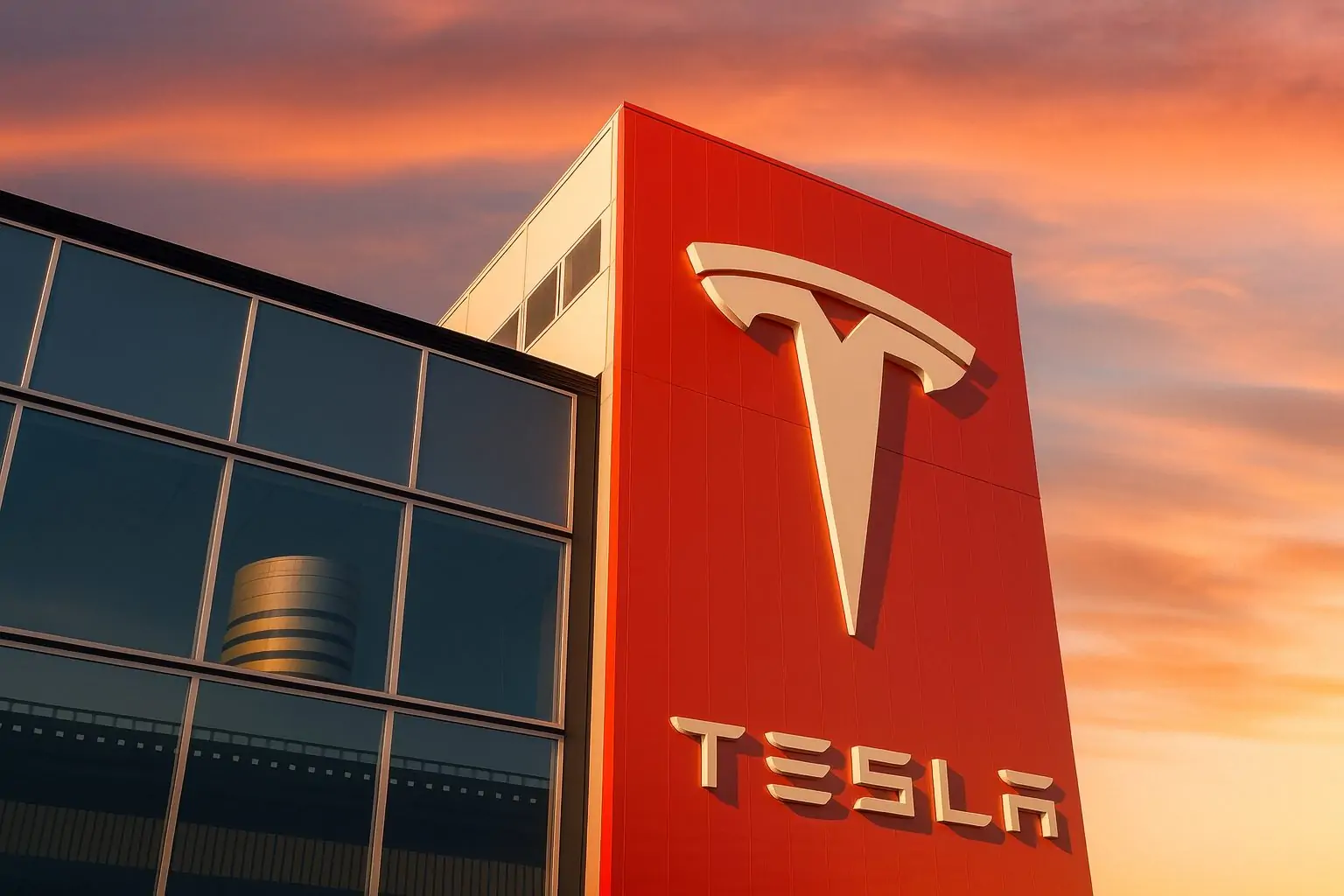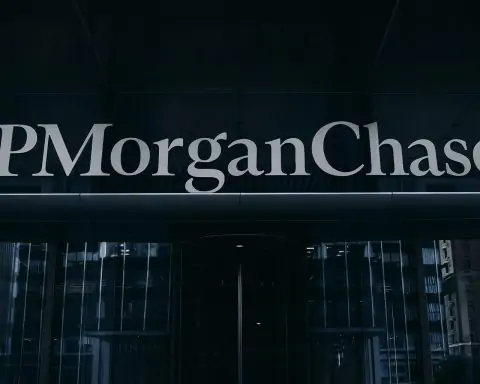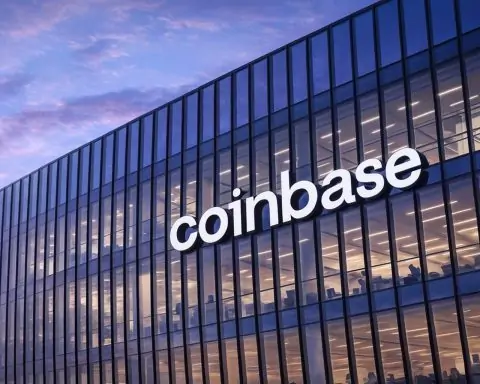Published: November 27, 2025
With U.S. stock markets closed for Thanksgiving on Thursday and set to reopen for a shortened Black Friday session tomorrow, Tesla, Inc. (NASDAQ: TSLA) will be one of the most closely watched names when the opening bell rings.
Heading into Friday’s half‑day of trading — the NYSE and Nasdaq will both close at 1 p.m. ET on November 28【 [1]】— Tesla sits near the top of its recent range, buoyed by fresh AI‑chip headlines, a “must‑own” Wall Street label, and a big push into India, but weighed down by EV demand concerns, regulatory probes and new lawsuits.
Here’s a deep dive into what traders and long‑term investors should know about Tesla stock before the market opens tomorrow.
1. Where Tesla stock stands heading into Black Friday
Tesla shares last finished regular U.S. trading around $426–$427 per share, close to recent highs and almost double their 52‑week low near $214 set in April. That leaves the stock roughly 13% below its 52‑week high around $489.【 [2]】
At these levels, Tesla carries:
- Market cap: ≈ $1.4 trillion【 [3]】
- P/E ratio: ~284x trailing earnings
- PEG ratio: ~16.8
- Beta: about 2.06, meaning Tesla typically moves about twice as much as the broader market
- Balance sheet: very low net debt (debt‑to‑equity around 0.07), with a current ratio above 2, giving it substantial liquidity【 [4]】
Technically, Tesla’s 50‑day moving average sits near $434, above its 200‑day moving average around $368, underscoring the strong uptrend that began in the spring.【 [5]】
After the latest session, Tesla also traded essentially flat in extended hours around $426.6, according to after‑hours data, suggesting no major post‑close shock heading into the holiday break.【 [6]】
Why it matters for tomorrow:
With markets reopening in a short, lower‑liquidity Black Friday session, Tesla is perched near resistance but not at extremes. That can amplify moves if any fresh headlines hit — particularly around AI, robotaxis or regulation.
2. The bull case: AI, robotaxis and “must‑own” status
For many bulls, Tesla is no longer just an EV company — it’s an AI and robotics platform with upside far beyond car margins. That narrative has accelerated over the past week.
Wall Street calls Tesla a “must‑own”
A widely shared note from Melius Research, highlighted by MarketBeat, recently called Tesla a “must‑own” stock, citing its rapidly advancing AI and autonomy stack and concluding that legacy automakers are increasingly struggling to catch up. The report pointed to Tesla’s data advantage, end‑to‑end neural nets and in‑house chips as key reasons the company’s lead is widening rather than shrinking.【 [7]】
That bullish call came as Tesla shares were consolidating in the $390–$410 range, with technicians watching that zone as critical support and eyeing potential upside toward $460–$490 if momentum resumes.【 [8]】
Robotaxis: Austin expansion, but slower than Musk promised
On the autonomy front, Tesla recently confirmed it will roughly double its Model Y robotaxi fleet in Austin, Texas in December, taking the number of vehicles to around 60 — far below Elon Musk’s earlier public target of 500 robotaxis in the city by year‑end.【 [9]】
Even so, Tesla continues to pitch robotaxis as a core profit engine:
- Pilot services are already operating in Austin and the Bay Area, with plans to expand to 8–10 U.S. metro areas over time【 [10]】
- Musk has suggested demand for the self‑driving “Cybercab” could be “nutty,” and Tesla says it’s on track for more substantial robotaxi production in 2026【 [11]】
Tesla’s AI chip ambition: “More than everyone else combined”
In the past few days, Musk has heavily leaned into Tesla’s role as an AI‑chip company:
- He told investors Tesla plans to bring a new AI chip design into production every 12 months and ultimately “build chips at higher volumes than all other AI chips combined.”【 [12]】
- Tesla is already deploying AI4 chips, is finishing AI5, and is working on AI6 for vehicles, robots and data centers.【 [13]】
- Earlier this year, Tesla signed a $16.5 billion, multi‑year deal with Samsung to manufacture its next‑generation AI6 chip at a new Texas fab, positioning Samsung as a key hardware partner for Tesla’s self‑driving and Optimus humanoid robot programs.【 [14]】
Recent coverage from Barron’s and others has framed this as Tesla quietly building a significant AI‑chip and compute business, with millions of chips already in cars and data centers supporting Tesla’s “real‑world AI” ambitions.【 [15]】
Takeaway:
Heading into Black Friday, the bullish narrative around Tesla is dominated by AI, chips and robotaxis. That story helps justify a tech‑style valuation, even while the core car business faces more mundane headwinds.
3. The bear case: EV demand, competition and margins
Behind the AI and robotaxi hype, Tesla’s bread‑and‑butter vehicle business is under pressure.
Europe and China sales are cooling
Reuters recently reported that Tesla’s China‑made EV sales fell about 9.9% year‑on‑year in October, with output from its Shanghai Gigafactory dropping more than 30% from September when including exports to Europe and other markets.【 [16]】
At the same time, a separate Reuters deep‑dive detailed how Tesla is struggling to “course‑correct” from a sales skid, particularly in Europe, where aggressive price cuts and new budget EVs from competitors have chipped away at Tesla’s market share and pricing power.【 [17]】
Key points from those reports:
- Tesla’s once‑commanding share of Europe’s battery‑electric vehicle market has declined as cheaper Chinese and European models flood the segment.
- Lower‑priced “Standard” versions of the Model 3 and Model Y have helped volumes but weigh on margins and brand positioning.【 [18]】
In China, Tesla’s decision not yet to launch the new low‑cost trims domestically — even as it aggressively rolls them out in Europe — underscores the knife‑edge competition against BYD and other local players.【 [19]】
Q3 2025 earnings: record revenue, but profit disappointment
Tesla’s Q3 2025 results, released in late October, showed the tension between growth and profitability:
- Revenue: $28.1 billion — a record and above analyst estimates around $26.4 billion
- EPS: $0.50 vs Wall Street’s $0.55 expectation
- Regulatory credits: revenue down 44% year‑on‑year, reducing a historical profit tailwind
- Operating expenses: up roughly 50%, driven by AI R&D, robotics, and higher stock‑based compensation【 [20]】
Tesla’s automotive gross margin (ex‑regulatory credits) came in near 15%, basically in‑line but still well below the levels that once supported the stock’s earlier premium valuation.【 [21]】
Notably, Reuters pointed out that Tesla’s valuation of about $1.45 trillion largely reflects investor bets on Musk’s robotics and AI pivot, while vehicle sales still underpin the company’s financial stability as those future products are built out.【 [22]】
Takeaway:
The bear case going into tomorrow is straightforward: EV growth is slowing, competition is rising, and margins are thin at a time when Tesla’s valuation assumes its ambitious AI and robotaxi bets work almost perfectly.
4. Regulatory and legal clouds to watch
Beyond demand and margins, Tesla faces a growing stack of regulatory and legal issues that could move the stock on any new headline.
Full Self‑Driving (FSD) under renewed scrutiny
U.S. safety regulators have opened a fresh investigation into Tesla’s Full Self‑Driving (FSD) software, covering nearly 3 million vehicles after reports that the system may roll through stop signs or exceed speed limits despite earlier recalls and software updates.【 [23]】
Separately, Europe’s regulatory path remains murky:
- Dutch vehicle authority RDW recently had to walk back a statement that was widely interpreted as signaling EU‑wide approval of FSD; the regulator later clarified that FSD is not yet approved in Europe, and any deployment would require additional review.【 [24]】
This underscores just how dependent Tesla’s autonomy roadmap is on regulatory goodwill.
New lawsuit alleges fatal design flaws
In Washington state, a new federal lawsuit alleges that design flaws in a Tesla Model 3 caused sudden unintended acceleration, sending the car into a utility pole where it burst into flames, killing the driver’s wife and badly injuring him. The suit also claims the door handles and manual overrides made it nearly impossible for bystanders to rescue the occupants once the battery shut down the electronic latches.【 [25]】
The case adds to several pending lawsuits that question Tesla’s door and battery design and whether its safety systems work as advertised during severe crashes.【 [26]】
Takeaway:
Any new NHTSA announcements, recall expansions, or court developments could trigger sharp moves in TSLA, particularly in Friday’s thinner trading environment.
5. India expansion and global supply chain messaging
While demand in some mature markets is slowing, Tesla is trying to open new growth lanes — most prominently in India.
India: Tesla opens a major hub and pitches low running costs
Tesla formally opened its largest sales and service centre in India this week in Gurugram, just outside New Delhi. The new “Tesla Centre” combines retail, servicing, delivery and fast‑charging in a single facility, supported by on‑site V4 Superchargers.【 [27]】
Key details:
- India head Sharad Agarwal told reporters that, thanks to lower maintenance and electricity versus petrol, Indian buyers could recoup about one‑third of the Model Y’s roughly $67,000 purchase price over 4–5 years.【 [28]】
- Tesla only entered India in July and has sold just over 100 Model Y units so far, reflecting the tiny size of the country’s premium EV market and steep import tariffs of around 100%.【 [29]】
- The Gurugram hub follows an earlier experience centre in New Delhi’s Aerocity and is part of a broader rollout of V4 Superchargers in Mumbai, Delhi and Gurugram.【 [30]】
For investors, India is still a long‑term story — modest volume today, but potentially meaningful optionality if tariffs fall and Tesla localizes production.
China: Tesla defends its use of local suppliers
In China, Tesla is dealing with both competitive and political pressures. This week, a top Tesla China executive, Grace Tao, publicly pushed back on reports that Tesla is asking suppliers to strip out China‑made components from vehicles built in the U.S.
On Chinese social media, Tao said Tesla “does not exclude” suppliers based on country of origin, emphasizing that the company uses the same standards globally and that more than 95% of components in its China‑made Model 3 and refreshed Model Y are sourced locally.【 [31]】
That message comes as U.S. and global automakers increasingly face pressure to diversify away from China in their supply chains【 [32]】— a trend that could raise costs and complicate Tesla’s own manufacturing footprint.
6. What Q3 2025 tells you about Tesla’s fundamentals
For all the daily noise, Tesla’s latest quarterly results still set the fundamental backdrop for tomorrow’s trade.
From Q3 2025 (quarter ended Sept. 30):【 [33]】
- Revenue: $28.1B, +11.6% year‑on‑year, and ahead of consensus
- GAAP EPS: $0.50, below expectations of $0.55
- Gross margin: ~18% overall
- Automotive gross margin ex‑credits: ~15.4%
- Regulatory credits: $417M, down sharply from $739M a year earlier
- Operating expenses: up 50%, with management flagging heavy AI, chip and robotics investment
- Guidance: Tesla did not provide a detailed full‑year 2025 production forecast
Analysts and investors are wrestling with a simple question:
Can Tesla grow into its AI and robotaxi valuation before its vehicle business stalls out?
So far, Wall Street appears split. Many bulls see Q3 as proof that Tesla can still grow revenue double‑digits while funding massive AI projects; skeptics point out that earnings per share are lower than a year ago despite record sales, which is not typical “hyper‑growth tech stock” behavior.
7. How Wall Street is pricing TSLA now
Despite its trillion‑plus valuation, Tesla’s analyst slate is nowhere near unanimous.
According to MarketBeat’s aggregation of broker ratings:【 [34]】
- Tesla currently carries a consensus rating of “Hold.”
- The analyst mix includes buy, hold and sell ratings, with a consensus price target around $394, which is actually below where the stock trades today.
- Recent price targets range widely, from neutral calls around the mid‑$300s to bullish targets near $500 from firms like Royal Bank of Canada, TD Cowen and others.
Meanwhile, more qualitative recent notes have swung in both directions:
- Bullish:
- Bearish:
- HSBC and UBS have maintained sell/reduce ratings, arguing that Tesla’s valuation leaves little room for execution missteps or EV‑market disappointment.【 [37]】
Add it up, and Wall Street’s message before Black Friday is mixed: the upside case is large if AI and autonomy pay off, but the stock already discounts a lot of that success.
8. What options and fund flows are signaling
Options market: heavy call activity into the November 28 expiry
Short‑term sentiment around Tesla is particularly evident in the options market.
- On November 25, Tesla options volume swelled to about 1.7 million contracts, or nearly 190% of the stock’s average daily share volume over the prior month.
- The single busiest line: the $420 strike call expiring November 28, 2025, with more than 69,000 contracts traded that day — a sizeable bet on near‑term upside into this week’s holiday period.【 [38]】
Earlier in November, other reports also highlighted massive call volumes at strikes around $450–$480, suggesting a cohort of traders is positioning for a continued rally into year‑end.【 [39]】
For Friday, that $420 call line and other near‑money contracts expiring tomorrow will be closely watched as they roll off — they can intensify intraday moves if dealers adjust hedges around key levels.
Institutional & insider activity: mixed signals
Fresh SEC filings summarized by MarketBeat show divergent institutional behavior:【 [40]】
- Korea Investment Corp trimmed its Tesla stake, selling 79,319 shares, while still holding a significant position.
- Firms like Harfst & Associates and Quadrant Capital Group have increased their holdings, and giants such as Vanguard and Goldman Sachs have also added to positions over recent quarters.
- About 66% of Tesla’s float is held by institutions and hedge funds, while insiders still control nearly 20% of the stock — unusually high for a mega‑cap.
- Recent insider sales included CFO Vaibhav Taneja and director James Murdoch trimming stakes after the stock’s big run.
None of this is dramatically bullish or bearish on its own, but it reinforces Tesla’s profile as a heavily institutionally owned, highly traded, options‑driven mega‑cap — a setup where positioning can sometimes matter as much as fundamentals over short windows.
9. What to watch in tomorrow’s Black Friday session
With markets closed today and an early close tomorrow, liquidity will be lighter than usual. Here’s what could matter most for TSLA before and after the opening bell:
- Any fresh Musk posts on X about AI chips, robotaxis or FSD
Musk has been unusually vocal about Tesla’s AI chip roadmap and hiring push in recent days, and his posts have already nudged the stock higher. Another bold claim — especially about timelines for removing human safety drivers or expanding robotaxis — could sway short‑term sentiment.【 [41]】 - Follow‑through on the AI‑chip narrative
Traders will be watching whether Tesla continues to trade in sync with other AI leaders after the latest batch of AI‑chip headlines, or whether the stock starts reacting more to EV‑specific news instead.【 [42]】 - Any new regulatory or legal headlines
Updates from NHTSA on FSD, developments in the new Tacoma crash lawsuit, or clarifications from European regulators could all hit the tape without warning and have an outsize impact in a thin session.【 [43]】 - Reaction to India and China headlines
Investors may continue to digest Tesla’s India launch math — especially the claim that buyers can recoup about one‑third of a Model Y’s cost via lower fuel and maintenance over 4–5 years — along with its messaging around Chinese suppliers and slowing China sales.【 [44]】 - Options expiry dynamics around the $420 level
With tens of thousands of $420 and nearby strike calls expiring on November 28, any early push above or below those strikes could feed back into intraday volatility as hedges are adjusted.【 [45]】 - Macro risk sentiment after Thanksgiving
Broader AI‑ and tech‑heavy indices have been strong into the holiday week, and Thanksgiving week is on track to be one of the best since 2012 for major U.S. benchmarks.【 [46]】
If that risk‑on mood survives into Friday’s shortened session, Tesla could benefit; a risk‑off turn, on the other hand, might hit high‑multiple names like TSLA hardest.
Bottom line
Heading into tomorrow’s Black Friday open:
- The story supporting Tesla’s $1.4 trillion valuation is increasingly about AI, chips and robotaxis, not just electric cars.
- The fundamentals still show a company with record revenue but compressed margins, cooling EV demand in key markets, and rising regulatory and legal scrutiny.
- Wall Street and the options market are deeply divided, with “must‑own” bulls and vocal skeptics both piling in at once.
In a holiday‑thinned session with a 1 p.m. ET close, that mix of high expectations, rich valuation and heavy positioning means Tesla stock could be more volatile than usual — in either direction.
As always, this overview is for information and news purposes only and is not financial advice. Anyone considering trading or investing in Tesla should evaluate their own risk tolerance, time horizon and independent research before making decisions.
References
1. www.nasdaqtrader.com, 2. www.indmoney.com, 3. www.indmoney.com, 4. www.marketbeat.com, 5. www.marketbeat.com, 6. public.com, 7. www.investing.com, 8. www.investing.com, 9. www.reuters.com, 10. www.investors.com, 11. www.reuters.com, 12. www.investopedia.com, 13. www.businessinsider.com, 14. www.investopedia.com, 15. www.barrons.com, 16. www.reuters.com, 17. www.reuters.com, 18. www.reuters.com, 19. www.reuters.com, 20. www.reuters.com, 21. www.reuters.com, 22. www.reuters.com, 23. www.reuters.com, 24. www.businessinsider.com, 25. komonews.com, 26. komonews.com, 27. auto.hindustantimes.com, 28. www.reuters.com, 29. www.reuters.com, 30. www.gadgets360.com, 31. www.reuters.com, 32. www.reuters.com, 33. www.reuters.com, 34. www.marketbeat.com, 35. www.investing.com, 36. www.teslarati.com, 37. www.investing.com, 38. www.nasdaq.com, 39. finance.yahoo.com, 40. www.marketbeat.com, 41. www.businessinsider.com, 42. www.barrons.com, 43. www.reuters.com, 44. www.reuters.com, 45. www.nasdaq.com, 46. www.barrons.com







